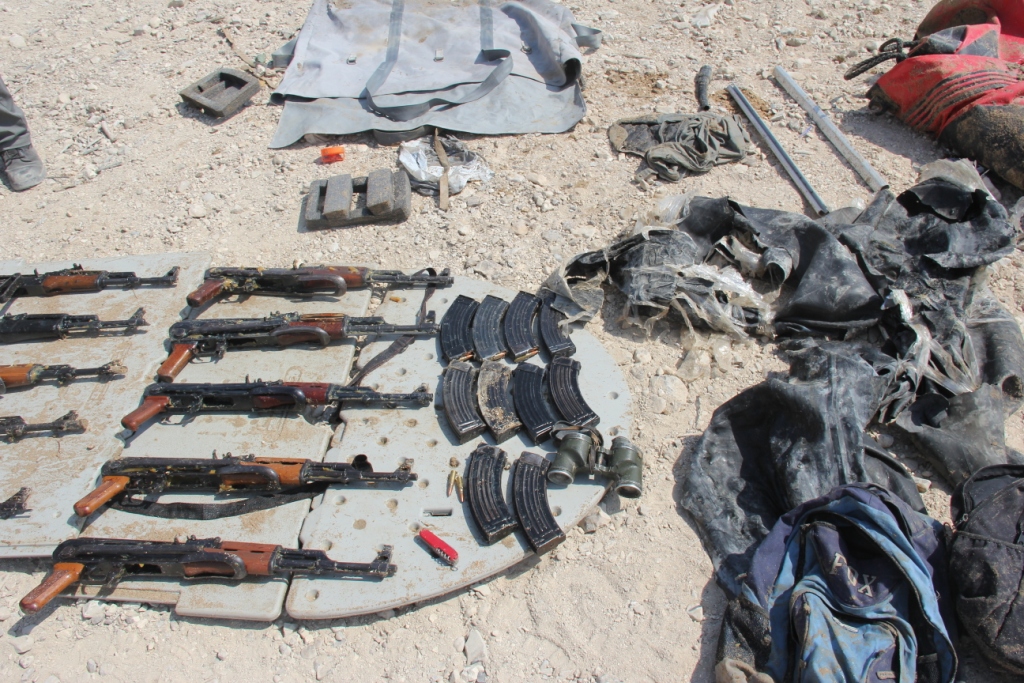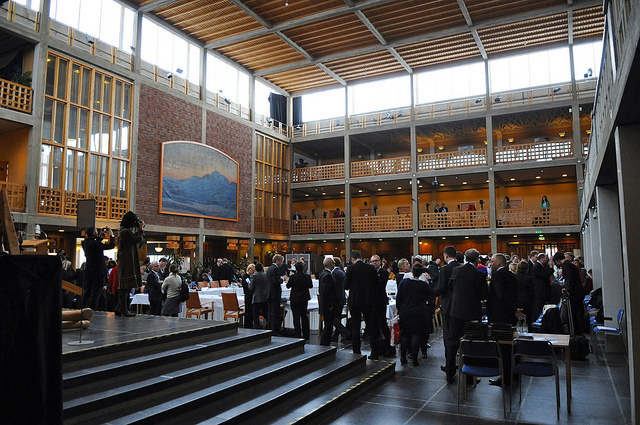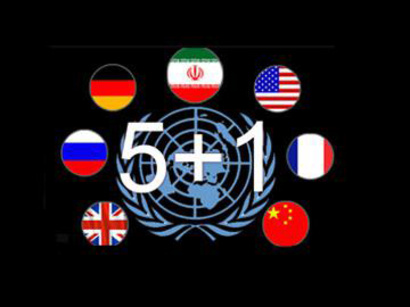Over the past 50 years, the list of treaties geared towards regulating nuclear arms is lengthy. The number of people killed by the use of nuclear weapons in that time? Zero. Of course, nuclear weapons are extremely destructive, and deserve such attention. But this fact does create an interesting juxtaposition.
On any given day, up to 2,000 people are killed by conventional weapons, particularly small arms. It is significant, then, that the Arms Trade Treaty (ATT), meant to regulate the international transfer of conventional weapons, received its 50th ratification last month and will thus come into force in December. This Treaty is the first of its kind and, while it has the potential to have a large impact on reducing wanton violence around the world, its success hinges on the efficacy of its implementation and the credible and sustained commitment of participating states.
International trade in conventional weapons is a massive and largely unregulated $70 billion industry. This enormous flow of arms contributes to immeasurable suffering around the world. The Control Arms coalition estimates that 1.5 billion people live in fragile areas affected by conflict or large-scale organized criminal violence. Fifty million people fled their homes in 2013 due to violence.
Such violence affects all facets of a country; conflict-affected states “lag 40-60% behind other low- and middle-income countries” in fulfilling the Millennium Development Goals. The presence of weapons also contributes greatly to gender-based violence, which claims the lives of 66,000 women per year. In purely economic terms, conflict costs Africa $18 billion per year. Conventional weapons fuel such conflicts, and 95% of Kalashnikovs—the most common weapons used there—originate outside Africa.

The ATT aims to regulate the transfer of weapons such as tanks, artillery, warplanes, helicopters, warships, missiles, and small arms & light weapons, to keep them out of malicious hands. Under the ATT, arms exporters will need to evaluate whether weapons exported will be used for genocide, crimes against humanity, attacks on civilians, violence against women and children, and transnational organized crime, or the contravention of arms embargoes, international humanitarian or human rights law, or the Geneva Conventions. If the sale would likely transgress any of the above stipulations, the exporting state must not authorize the transaction.
The ATT also aims to eradicate the illicit arms trade and, perhaps most significantly, the diversion of arms from their intended use. This includes the theft or corrupt sale of authorized weapons that may fall into the wrong hands or be used for improper ends. The Islamic State violence in the Middle East has been largely fuelled by such arms diversion.
Words on paper are one thing; putting them into action is another. This is where the ATT is still very much a work in progress. A key aspect of the Treaty will be the Secretariat, which will receive annual reports from countries detailing the import and export of arms. This will require the establishment and maintenance of appropriate infrastructure in each country to monitor the flow and use of arms.
Details of the Secretariat’s role, however, are still to be determined. As the Stockholm International Peace Research Institute (SIPRI) has explored, the Secretariat may confine itself to the role of ‘letter box,’ merely “receiving and distributing reports without scrutinizing their content,” or it may analyze the reports it receives, leading to “more informative and accurate reporting,” but potentially isolating states that have not yet signed or ratified the Treaty. It must also be determined whether the Secretariat will take an active role in matching funding offers with requests for implementation assistance by participating countries, to strengthen their capacity to implement the ATT.
Over the next year, key decisions about the ATT’s function will be made, as the First Conference of States Parties (CSP1) must be held within 12 months of the Treaty’s entry into force. The CSP1 will determine the Secretariat’s location, role, and funding. If past treaties serve as any indication, such decisions are best made early. Given the importance of achieving more ratifications than the current 53, signatories should be given a significant voice in these discussions, even though states that have already ratified the Treaty will need to take the lead.
There are two mechanisms in the ATT aimed at ensuring that states are equipped to fulfill their obligations. The ATT-Baseline Assessment Project (ATT-BAP), is a mechanism for states’ self-assessment, to help them understand Treaty obligations and prepare to meet them. It includes a Ratification Checklist and Baseline Assessment Survey, which will assess each country’s preparedness. It will also assist in creating a database to aid in matching countries and areas of need with “relevant and available resources and expertise for capacity-building.”
Another tool to assist smaller nations or those with weaker institutions is the UN Trust Facility Supporting Cooperation on Arms Regulation (UNSCAR). This “multi-donor, flexible funding mechanism to address implementation challenges” will help developing nations meet requirements of the Treaty as well as coordinating and monitoring assistance and establishing sustainable, “predictable” sources of funding.
These initiatives will, ideally, help address concerns about effective ATT implementation in less-developed countries, particularly in Africa. The ATT will require “infrastructure and resources to monitor illegal border crossings and other conduits for the proliferation of the illicit arms trade,” posing potential problems for some states. The Institute for Security Studies notes that, in many African states, there are “minimal resources to monitor illegal border crossings used in the arms trade, and an environment fraught with corruption and criminality.” It is therefore critical that the international community provide assistance for the necessary infrastructure to combat corruption in key states racked by violence. It is these states that are often most affected by the unabated flow of conventional weapons, and thus stand to gain the most from an effective Treaty. Institutional capacity-building will be vital for the ATT’s success, and UNSCAR and the ATT-BAP should work closely with the Secretariat to ensure this is done efficiently.

Another major obstacle to the ATT’s success is the list of countries that have not yet signed or ratified the Treaty. China, Canada, Egypt, India, Iran, Israel, North Korea, Pakistan, Syria, and Russia (the 2nd-largest arms exporter in the world) have yet to sign the Treaty, among many others. The United States—by far the world’s largest exporter of weapons—has signed but is not likely to ratify it anytime soon.
As some countries, including Canada, resist committing to the ATT due to the (unsubstantiated) fear that it will interfere with domestic arms regulations, many arms exporters in effect “prioritize” and promote arms sales over arms regulation. An effective ATT will require both widespread participation, and a genuine commitment to responsible and accountable arms trading, even if that may mean curbed profits.
One issue that the ATT does not address is the sale of weapons by states to non-state actors – similar to how the US, UK, Germany, France, Saudi Arabia, and others have committed to arming groups fighting the Islamic State and the Assad regime in Syria; and Russia to non-state actors in Ukraine. This practice can easily lead to the unmonitored diversion of arms, inflaming civil wars. To increase its effectiveness, the ATT may need to attend to this area in the future.
The ATT has the potential to reduce a great amount of human suffering caused by conventional weapons. However, the coming year will go a long way in determining how much of that potential will be realized. A larger contingent of states-parties will increase reach and accountability, and widen the pool of assistance available to those countries in need of stronger institutions to control the flow of arms into and within their borders. The Treaty won’t rip the guns out of the bad guys’ hands just yet. But with a concerted effort and widespread commitment, it may be a start.




